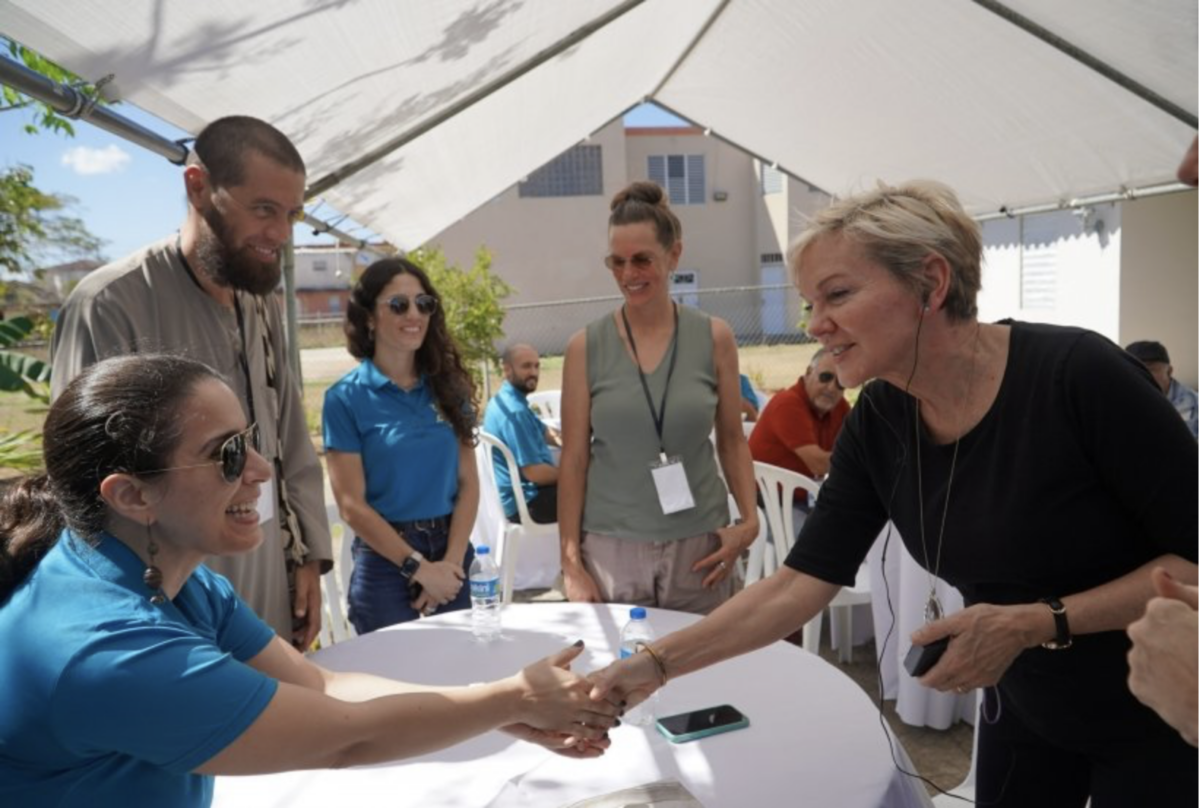Residents of Puerto Rico can apply, starting February 22, for the Department of Energy (DOE) Programa Acceso Solar (Solar Access Program).
The program intends to provide up to 30,000 low-income households with low cost solar and storage installations to residents who own and occupy a single-family home in an eligible neighborhood and qualify using Energy.gov’s eligibility map and questionnaire. The DOE determines neighborhood eligibility by assessing whether it has a high percentage of low-income residents and experiences long and frequent power cuts. While the systems that will be deployed under the Solar Access Program will reportedly have no up-front costs to the households that receive them, the households will have small contributions to the long-term maintenance of the systems, a cost that the Grid Deployment Office expects will be offset by energy bill reductions.
Qualified applicants must then collect all the required documentation and contact a local solar ambassador to guide them through the application process.
Energy.gov states that qualified applicants must demonstrate they are low-income through enrollment in a government assistance program, including the Low-Income Home Energy Assistance Program, Nutrition Assistance Program or Temporary Assistance for Needy Families.
Having a household resident dependent on an electricity or battery-powered medical device because of a medical condition or disability also may qualify a resident.
The Solar Access Program is funded by the Puerto Rican Energy Resilience Fund. The $1 billion grant is managed by the DOE’s Grid Deployment Office (GDO), the Federal Energy Management Agency and the Department of Housing and Urban Development. It was started after President Biden visited Puerto Rico following Hurricane Fiona in October 2022. He committed to allocating federal resources toward improving Puerto Rico’s electric grid through the Consolidated Appropriations Act, which was signed into law two months later and included $1 billion to establish the PR-ERF.
Energy.gov states that the fund has been developed in consultation with Puerto Rican entities and communities to reduce the energy burden of the territory’s most vulnerable residents as the region continues to increase its energy resilience. According to the DOE’s Low-Income Energy Affordability Data (LEAD) Tool, the average energy burden for low-income households across the U.S. is 8.6% (three times) higher than for non-low-income households, estimated to be 3%.
The Solar Access Program is the consumer-facing application phase of the first round of funding of the PR-ERF. Last summer, the GDO published a funding opportunity announcement for up to $450 million toward residential solar and storage installations and developing consumer protection and education resources. Eligible applicants included private industry, educational institutions, state and local government entities, nonprofits, and energy cooperatives. In November 2023, three solar businesses, seven nonprofits and five cooperatives began negotiations to receive up to $440 million toward solar and storage installations and developing education, training and consumer protection programs about them.
The PR-ERF is part of Puerto Rico’s effort to achieve 100% renewable electricity generation by 2050 and 40% by 2025. The region currently has 680 MW of distributed solar, according to a study by the DOE. Puerto Rico also has 1.6 GWh of residential-sited batteries and an additional 4,500 rooftop solar arrays being added every month. Each includes a 100% battery attachment rate.
This content is protected by copyright and may not be reused. If you want to cooperate with us and would like to reuse some of our content, please contact: editors@pv-magazine.com.








By submitting this form you agree to pv magazine using your data for the purposes of publishing your comment.
Your personal data will only be disclosed or otherwise transmitted to third parties for the purposes of spam filtering or if this is necessary for technical maintenance of the website. Any other transfer to third parties will not take place unless this is justified on the basis of applicable data protection regulations or if pv magazine is legally obliged to do so.
You may revoke this consent at any time with effect for the future, in which case your personal data will be deleted immediately. Otherwise, your data will be deleted if pv magazine has processed your request or the purpose of data storage is fulfilled.
Further information on data privacy can be found in our Data Protection Policy.